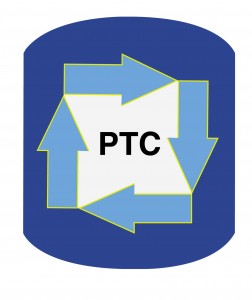In phase-transfer catalysis, it is rare to actually use quaternary ammonium (quat) hydroxides as phase-transfer catalysts since you can very often use an inexpensive combination of NaOH and a standard quat bromide or chloride. However sometimes, you can use a quat hydroxide in stoichiometric quantities in a diagnostic experiment to determine whether a PTC-OH reaction will work at all before attempting to optimize a PTC application using NaOH with catalytic quantities of QBr or QCl.
Sometimes, the quat hydroxide you need is not commercially available. If that is the case, you may need to make the QOH yourself. Since hydroxide is a hydrophilic “hard anion”, it has a lower affinity for organic quaternary ammonium cations than larger softer anions like chloride and especially bromide. This causes quat hydroxides to be expensive and hard to make. Therefore, when you try to exchange the ion in QX to make QOH by contact with NaOH, you need to choose X such that it is more hydrophilic than hydroxide.
One way of doing this is to choose X that is a dianion such as sulfate or even a trianion such as phosphate. Quat sulfates are often made by making quat hydrogen sulfates which become quat sulfates in-situ upon the addition of some base. Quat phosphates are hard to find.
US Patent 8,163,951 describes the formation of tetramethyl ammonium sulfate and even tetramethyl ammonium phosphate followed by ion exchange to tetramethyl ammonium hydroxide in high purity. The formation of tetramethyl ammonium phosphate is of particular interest to us since we have not seen this before.
We speculate that specialty methyl trialkyl hydroxides may be able to be made by the reaction of higher trialkylamines with trimethyl phosphate followed by hydrolysis and ion exchange with NaOH or using basic ion exchange resins.
If your company can benefit from achieving higher process performance in a shorter development time by having access to the best PTC expertise available, now contact Marc Halpern by E-mail or by phone at + 1 856-222-1146 to inquire about using phase-transfer catalysis to achieve low-cost high-performance green chemistry.
If you’re not sure if PTC can help your reaction, now fill out the form shown at http://phasetransfer.com/projectform.pdf and send it to Marc Halpern by fax at +1 856-222-1124 or by E-mail of a scanned copy. If we do not have a secrecy agreement already in place, please use “R-groups” instead of the exact chemical structures.

